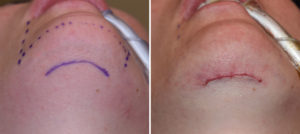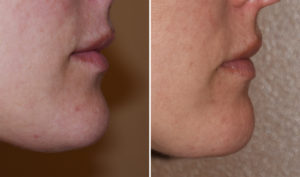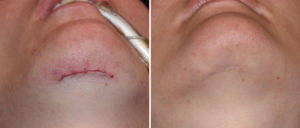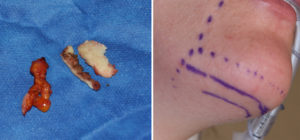Background: Chin reduction remains an infrequently performed and challenging procedure. It is a far ‘simpler’ aesthetic prospect to stretch out the soft tissues of a bony prominence through implants or osteotomies (chin expansion) than it is to do a bony chin reduction. While often believed that simple burring of the bone from an intraoral approach will work, and it does for horizontal bony reduction, it often creates secondary soft tissue issues.
When soft tissues are detached from the bone and the bone support simultaneously reduced, there is a high risk of a subsequent soft tissue sag. This is well chronicled in both chin and cheek reductions. While it would be great if the facial soft tissues always contracted and shrunk down around areas of reduced bone support…this is not always so.
Appreciation of soft tissue sags and redundancies serves as the basis for a submental chin reduction approach. And it also is how soft tissue problems after other chin reduction approaches are managed.
Case Study: This female was bothered by her overprojecting chin. This was present both at rest and when smiling. It was too vertically long and had slightly too much horizontal projection. Its width and current shape was acceptable.



Highlights:
1) A 3D chin reduction is often done best by a submental approach.
2) With bone reduction often comes the need for soft tissue reduction as well to prevent soft tissue pad sagging or excess.
3) The submental chin reduction incision heals well but soft tissue redundancies at their ends may need to be revised secondarily.
Dr. Barry Eppley
Indianapolis, Indiana




